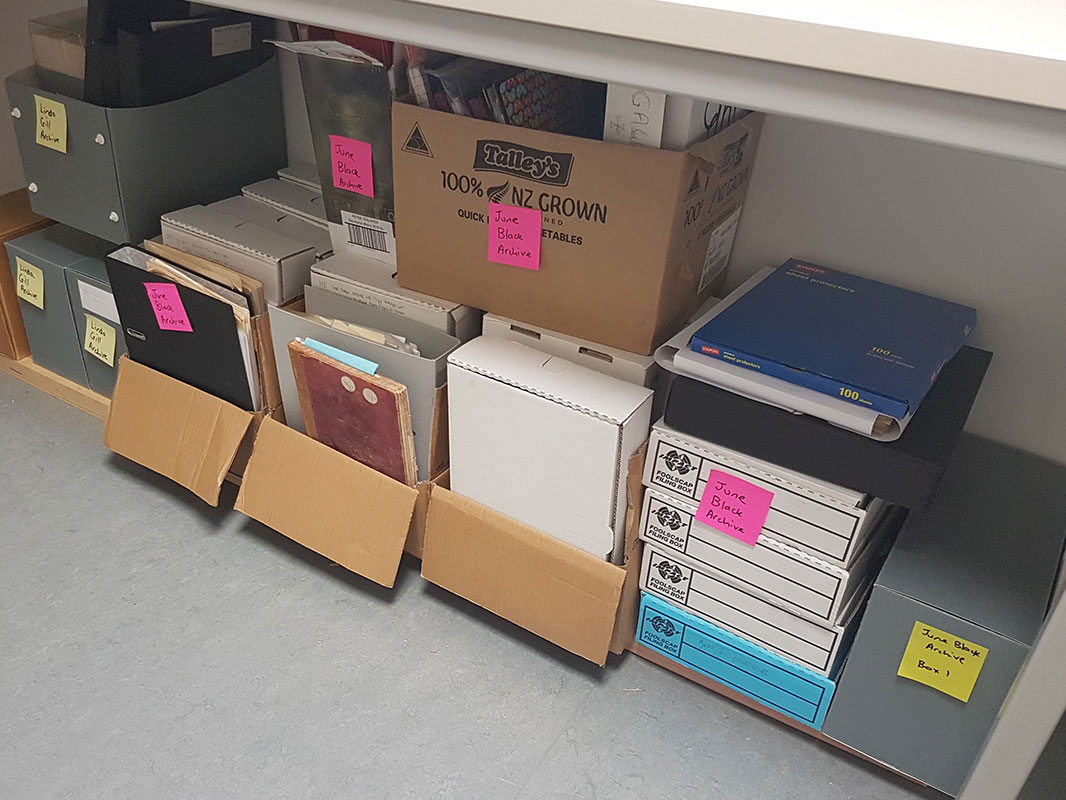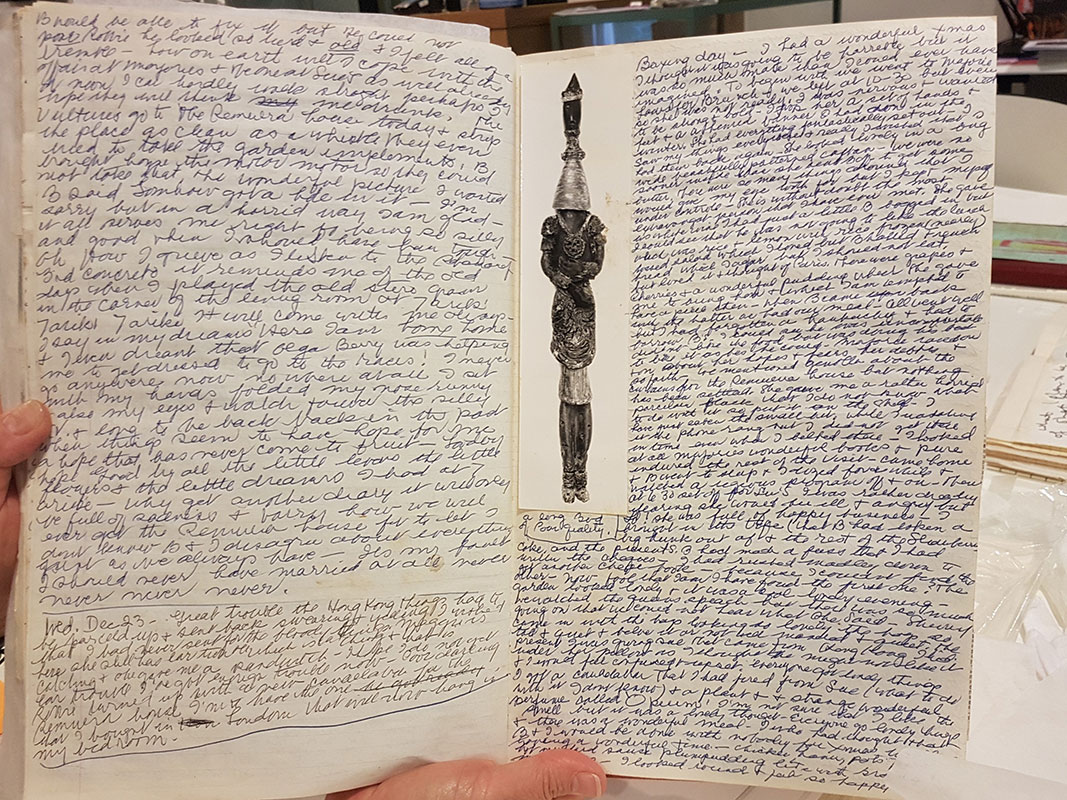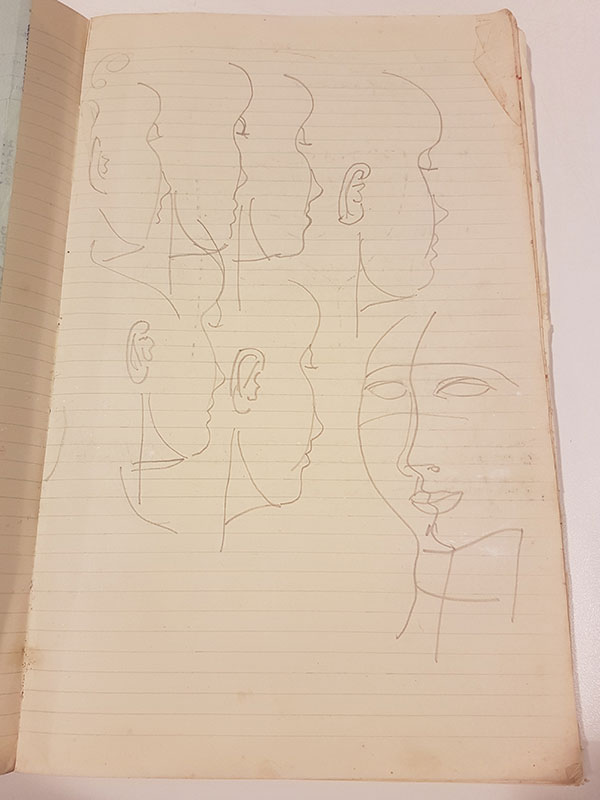This year I was lucky enough to be selected as the 2017/2018 Art Archives intern.
My internship began with the hardest decision of all – which art archive I wanted to accession. Three very different choices were before me: an artist archive, a historian archive and an archive from an art organisation. Each one was interesting in its own way however I ultimately decided to choose the more traditional option of the artist archive, this being the personal papers of June Black. Although I was not familiar with her work to begin with, I can now say I feel I know her very well. June was a New Zealand sculptor, painter and printmaker who was born in 1910 and lived until she was 99 years of age. She is known both for her paintings and her revolutionary ceramic sculptures.
At first glance, the June Black Archive was a random assortment of files that took up an astounding seven boxes. All the information Caroline McBride, Archivist and Research Librarian, and I had was that it consisted of about 40 journals with a few boxes of photos, correspondence and ephemera as well. It may have looked overwhelming to some but I was eager to get my hands in there and start examining everything. And so it began, Caroline and I carefully unpacked the boxes making sure we respected the original order of how items were placed. In the end we finished with: 53 journals, texts, publications, ephemera, correspondence, photos and a seventh pile of items belonging to Sheridan Keith, June’s daughter. Generally these would be removed, however Caroline and I decided this information was important for the archive and so we created a separate group for them.
Once I started delving into the material more closely, it became clear what a prolific writer June had been. The journals we had were bursting with text and it was very difficult to restrain myself from reading every page. As Caroline and I sorted through each journal we removed metal pins, staples and paper clips while covering photos, newspaper clippings and drawings that can be easily damaged. After organising all of the journals, they were deposited into acid free enclosures to keep them protected. Under advice from our paper conservator, they were then stacked on top of each other inside archival storage boxes that had a neutral pH and were lignin-free.
The rest of the archive followed the same process. In order for future researchers to access the information quickly and efficiently, I also created a finding aid for the material. Once I had finished it was immensely satisfying. Not only is everything now organised neatly but it can safely endure the years to come. All together the archive filled a total of 9 boxes measuring at 2.25 linear metres long.
In addition to the practical experience of accessioning an archive, Caroline also taught me about the wider aspects of the role of an archivist. I was also lucky enough to be given the task of curating a vitrine on the Laurel Doody Library Supply.
After completing both the June Black Archive and the Laurel Doody vitrine I still had a free week left of my internship so I was given the chance to start another archive. This time I chose the John Leech Gallery’s artist files and ephemera.
I would like to thank everyone who has helped me along the way, especially the Research Library team. However Caroline McBride deserves a special mention for being a fantastic teacher and providing her very important time and wisdom to run this invaluable internship.






